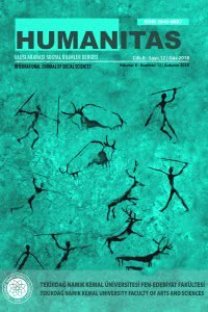AN ATTEMPT TO ESTABLISH A BILDUNGSROMAN DEVELOPMENT HISTORY: NURTURING THE RISE OF A SUBGENRE FROM ANCIENT BEGINNINGS TO ROMANTICISM
fiction, Bildungsroman, literary system, picaresque pattern, the rise of the English novel, romanticism
AN ATTEMPT TO ESTABLISH A BILDUNGSROMAN DEVELOPMENT HISTORY: NURTURING THE RISE OF A SUBGENRE FROM ANCIENT BEGINNINGS TO ROMANTICISM
fiction, Bildungsroman, literary system, picaresque pattern, the rise of the English novel, romanticism,
___
- Abrams, M. H. (1970). English Romanticism: The Spirit of the Age. In H. Bloom (Ed.), Romanticism and Consciousness: Essays in Criticism (pp. 91-119). New York: W. W. Norton and Company. Alter, R. (1965). Rogue’s Progress: Studies in the Picaresque Novel. Cambridge: Harvard University Press. Argyle, G. (2002). Germany as Model and Monster: Allusions in English Fiction, 1830s-1930s. Montreal: McGill-Queen’s University Press. Auerbach, E. (2000). Mimesis: Reprezentarea realitatii in literatura occidentala. Iasi: Polirom. Bahti, T. (2001). Literary criticism and the history of ideas. In C. Knellwolf and C. Norris (Eds.), The Cambridge History of Literary Criticism, Volume 9: Twentieth Century Historical, Philosophical and Psychological Perspectives (pp. 31-42). Cambridge: Cambridge University Press. Bakhtin, M. M. (1981). Forms of Time and of the Chronotope in the Novel. In Michael Holquist (Ed.), The Dialogic Imagination: Four Essays (pp. 84-258). Austin: University of Texas Press. Bakhtin, M. M. (1986). The Bildungsroman and Its Significance in the History of Realism: Toward a Historical Typology of the Novel. In Caryl Emerson and Michael Holquist (Eds.), Speech Genres and Other Late Essays (pp. 10-59). Austin: University of Texas Press. Banerjee, J. (1996). Through the Northern Gate: Childhood and Growing Up in British Fiction, 1719-1901. Bern: Peter Lang AG. Bjornson, R. (1977). The Picaresque Hero in European Fiction. Wisconsin: The University of Wisconsin Press. Butler, M. (1981). Romantics, Rebels and Reactionaries: English Literature and its Background 1760-1830. Oxford: Oxford University Press. Chase, C. (1993). Romanticism. London: Longman. Eagleton, T. (2005). The English Novel: An Introduction. Oxford: Blackwell Publishing. Frye, N. (1990). Anatomy of Criticism: Four Essays. London: Penguin Books. Guillén, C. (1971). Toward a Definition of the Picaresque. In Literature as System: Essays Toward the Theory of Literary History (pp. 71-110). Princeton: Princeton University Press. Guillén, C. (1987). The Anatomies of Roguery. The Origins and the Nature of Picaresque Literature. New York: Garland. Jeffers, Thomas L. (2005). Apprenticeships: The Bildungsroman from Goethe to Santayana. New York: Palgrave Macmillan. Moretti, F. (2000). The Way of the World: The Bildungsroman in European Culture. London: Verso. Robert, M. (1983). Romanul inceputurilor si inceputurile romanului. Bucuresti: Editura Univers. Roznoveanu, M. (1983). Civilizatia romanului. Bucuresti: Editura Albatros. Wellek, R. (1963). Concepts of Criticism. London: Yale University Press.
- ISSN: 2147-088X
- Yayın Aralığı: Yılda 2 Sayı
- Başlangıç: 2013
- Yayıncı: Namık Kemal Üniversitesi
ORTAÇAĞ TÜRK-İSLÂM DEVLETLERİNDE HÜKÜMDARIN ADALET SEMBOLÜ: Dîvânü’l-Mezâlim
Öteki ve Varlık: Freudo-Lacan’cı Politik Psikoloji Üzerinden Schmitt’i Yeniden Okumak
Rıfat GÜNDAY (YABANCI DİLLER EĞİTİMİ), Fahriye ÇAKIR, Hasan ATMACA
Toplumsal Gerçeklik ve Postmodern Roman
GEORGE ELIOT’UN MIDDLEMARCH’I: VİKTORYEN DÖNEMİ ROMANINDA REFORM VE KALKINMA TUTKUSU
SAFEVİ-OSMANLI SINIR BÖLGESİ: SAFEVİLERİN GÖZÜ İLE IRAK-I ARAB
FROM ‘HOWLING WILDERNESS’ TO ‘HOLY WILDERNESS’-‘ULUYAN YABAN’DAN ‘ULU YABAN’A
